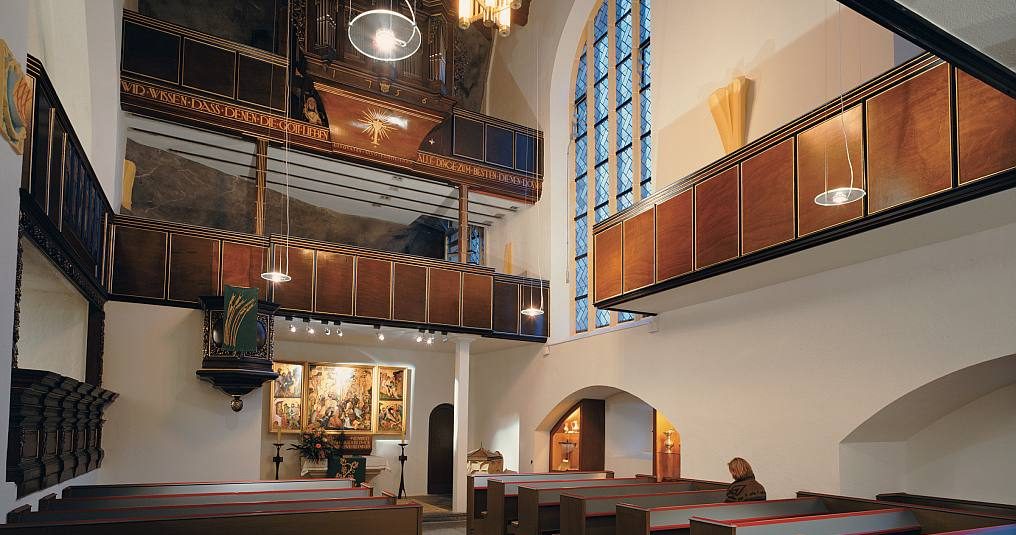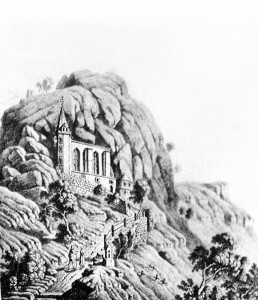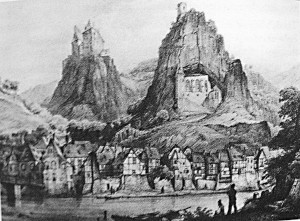
The Felsenkirche, a church built into a natural niche in the rocks, rises high above the houses of Oberstein.
Wyrich IV. of Daun-Oberstein had it constructed in the years 1482-1484. Behind it, a wall of rocks rises steeply upwards; and under it, the houses of Oberstein nestle into the slope. On account of its prominent location, the church has become a symbol of the city. Where else is there a church that can only be entered through a tunnel which was dug into the rocks (1980-1981)?
The church’s greatest treasure is the medieval winged altar. It was created around 1400 by an unknown painter, the “Master of the Mainz Mocking”.
More works of art:
- epitaph of Knight Phillip II of Daun-Oberstein, father of the church’s builder, †1432
- Sebastian painting, approx. 1570, depicting the family of the Count Sebastian of Daun-Oberstein-Falkenstein
- Apostle paintings, 17th and 18th centuries
- fragments of late Gothic glass windows, which were badly damaged by falling rocks in 1742
- baptistery, from 1500
- rock crystal crucifix
- naturally-occuring agate cross from Brazil
- Müller organ, 2002, built into the original Stumm organ’s encasing.
The viewing platform, opened in 2003, enables visitors to enjoy impressive views of Oberstein and of the Felsenkirche.

The Felsenkirche in the year 1827 – lithograph by Philip Ludwig Strack (the artist was indicating the old cemetery by the crosses in the rock-face)

View of Oberstein around 1840, the second house on the right next to the bridge is the small Catholic Walpurgis Church that was erected by the Protestants in 1685 and was then torn down in 1855.
